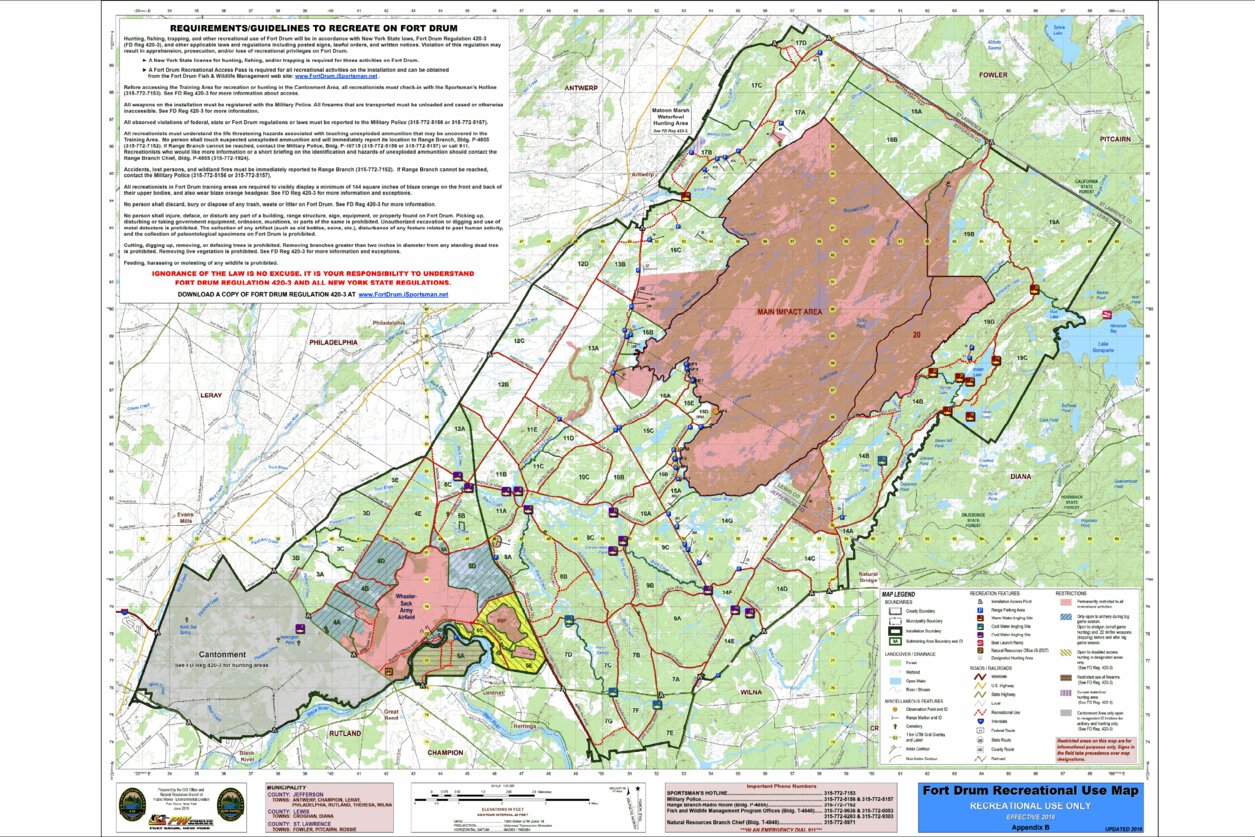
Fort Drum is a U.S. Army military reservation and census-designated place in Jefferson County, New York, strategically positioned near the U.S.–Canada border Wikipedia . These maps illustrate Fort Drum’s training areas, cantonment zone, and key transport routes in relation to nearby Watertown and the international boundary.
Executive Summary
Fort Drum, home of the 10th Mountain Division, is strategically positioned 30 miles south of the US-Canadian border, serving as a pivotal hub for northern defense and power projection . The installation boasts a 10,000-foot runway, a high-capacity railhead, and a 108,733-acre training complex that supports large-scale multi-domain operations . From May 6 to 23, exercises such as Mountain Peak and the preceding Exercise Hungry Horse will test air assault, cold-load, and joint interoperability alongside Canadian units . These activities collectively convey a strategic warning to Canada and demonstrate Fort Drum’s capability as a potential staging area for cross-border contingencies
Strategic Significance
Fort Drum is located approximately 30 miles south of the US-Canadian border, granting it immediate access to northern approaches and cross-border corridors. The installation’s Wheeler-Sack Army Airfield (WSAAF) includes a 10,000-foot runway capable of supporting strategic airlift assets such as C-17 Globemaster III and C-5 Galaxy aircraft .
A robust railhead with four loading tracks processes 40–50 railcars daily and is being expanded under a $21 million project to double loading capacity, add an Alert Holding Area, and improve cargo inspection facilities f. Fort Drum’s 108,733-acre training complex encompasses 47 live-fire ranges and 18 major maneuver areas, enabling year-round, large-scale combined arms and multi-domain training .
Key Military Exercises May 6–23
Mountain Peak Exercise
Soldiers from the 2nd Brigade Combat Team and the 10th Combat Aviation Brigade are conducting Mountain Peak, a division-level exercise focused on cold-load sling operations and elevator drills to rehearse rapid artillery insertion via CH-47 Chinook helicopters . The exercise tests joint arms coordination, air assault capabilities, and sustainment of heavy firepower in austere northern terrain .
Exercise Hungry Horse
Exercise Hungry Horse, held April 29 through May 3, integrated the 2nd Regiment, Royal Canadian Horse Artillery with the US Army’s 6th Squadron, 6th Cavalry Regiment and the 20th Air Support Operations Squadron to certify close air support interoperability . Canadian JTAC teams conducted air support training while US pilots and Air Force evaluators practiced tight coordination, fostering seamless cross-border operational trust .
Historical Context of Multi-Domain Readiness
Summit Strike ’24 showcased Fort Drum’s multi-domain warfighting focus by integrating surface-to-surface fires, ISR assets, and electronic warfare systems to refine kill-web capabilities against near-peer threats . Similarly, Exercise Storm Flag 24-07 emphasized joint logistics, C-17 airdrops, and deployment certification, highlighting the installation’s rapid distribution network and sustainment proficiency .
Implications for Canada
The concentration of lethal artillery, aviation assets, and critical staging infrastructure at Fort Drum from May 6 through 23 serves as both a demonstration of US military readiness and a strategic warning to Canada regarding its northern defenses . In the event of heightened tensions, the site’s runway, railhead, and training complex could be repurposed as a staging area for cross-border operations under national directives .




